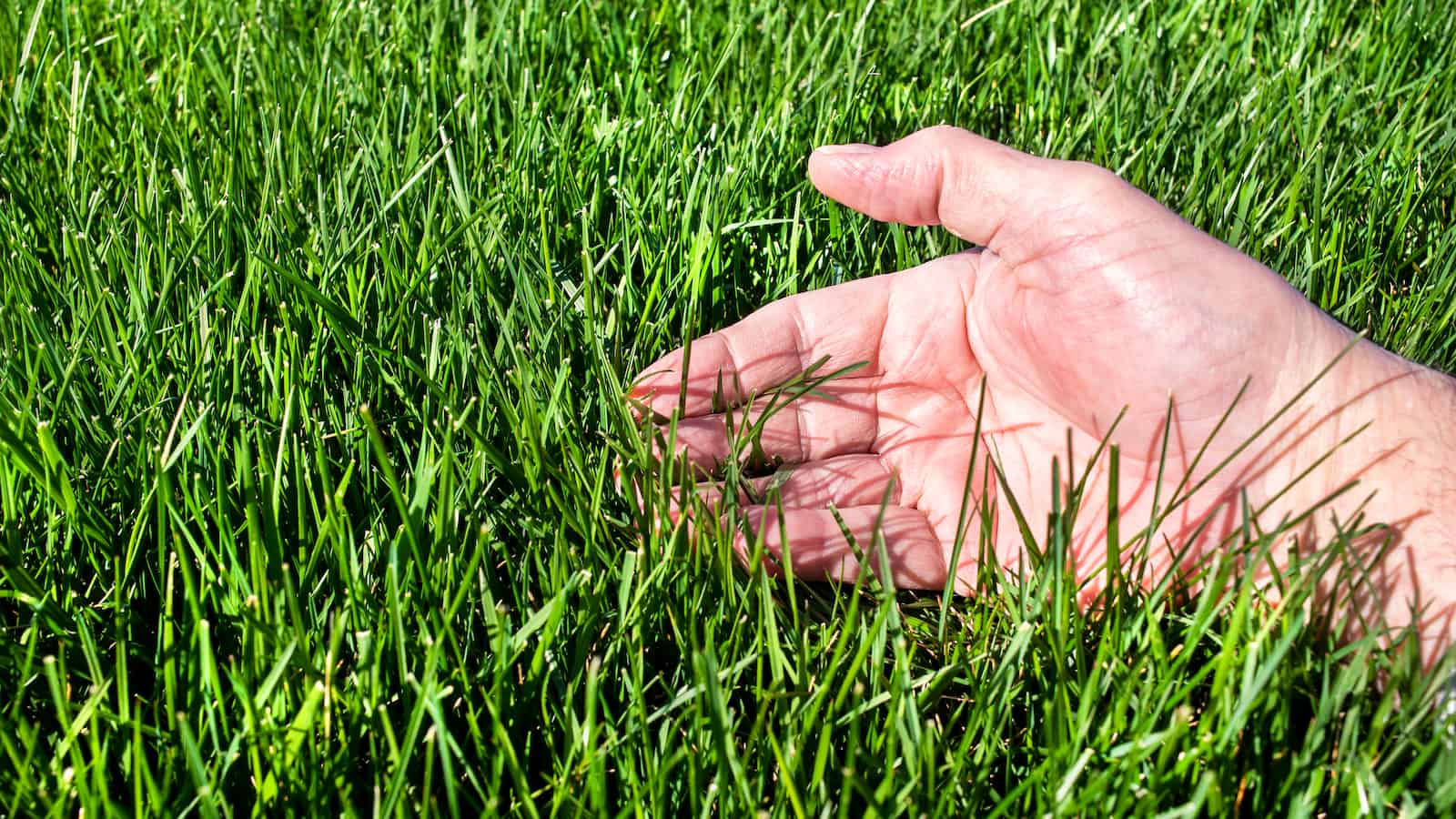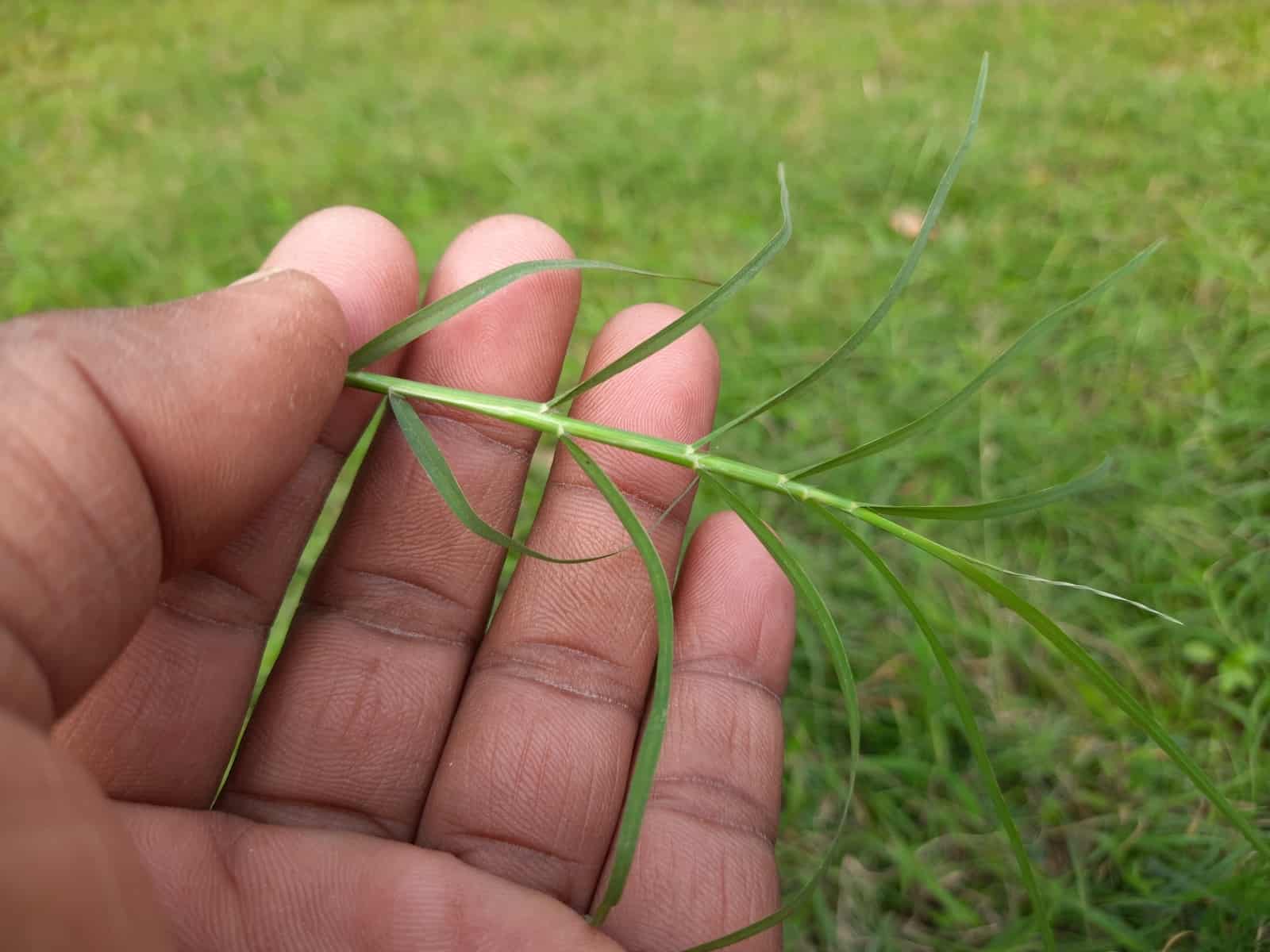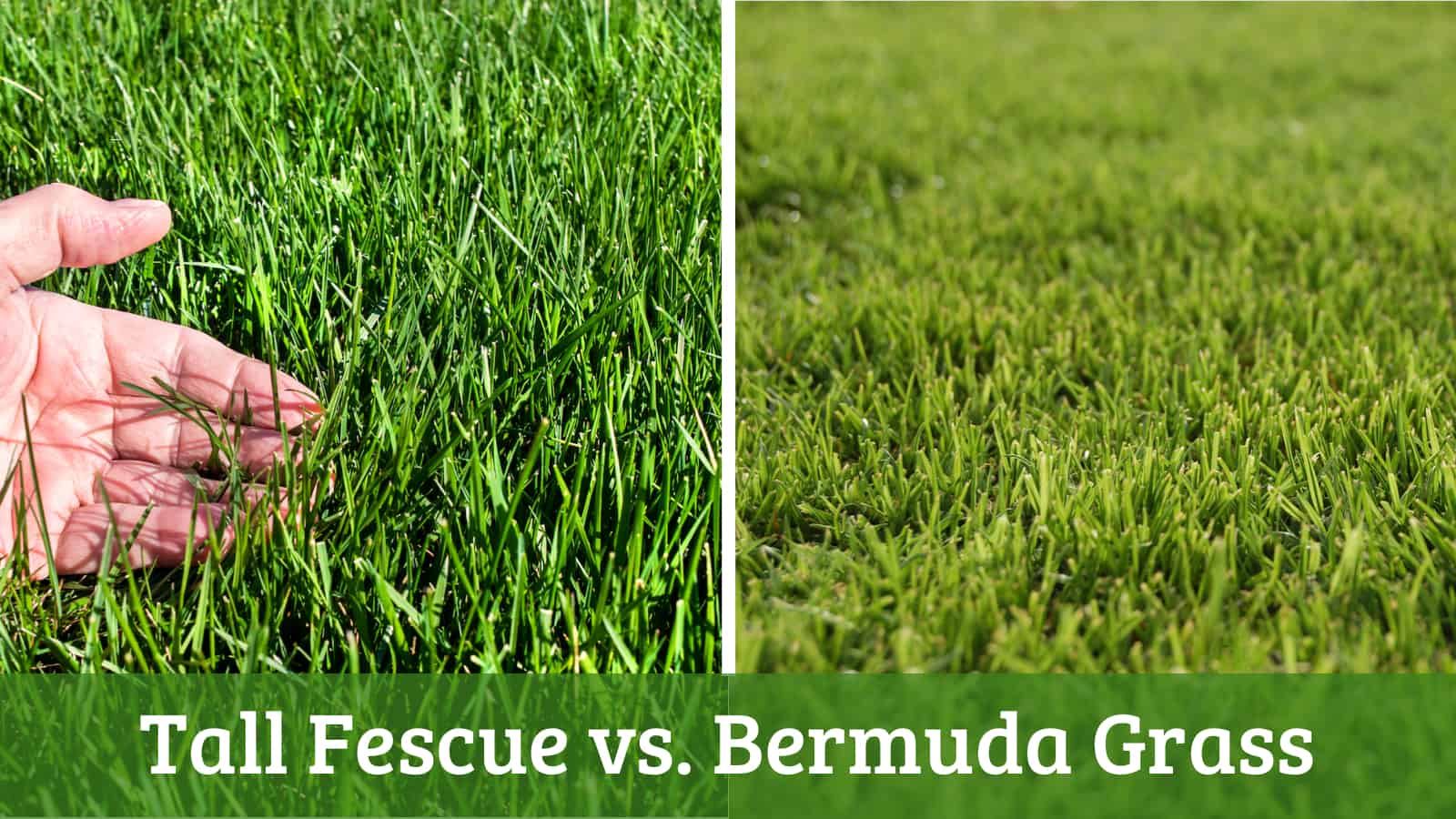Are you looking for beautiful and hardy grass to plant in your backyard but are not entirely sure what options are right for you?
Not to worry – there are two popular and hardy grass species that could be amazing options for your lawn.
We will discuss the differences between Fescue and Bermuda grass, their maintenance requirements, where they thrive best, and what they each look like, giving you the bigger picture when choosing the grass that’s right for you.
Tall Fescue vs. Bermuda – What Are They?
Before we discuss the differences between Tall Fescue and Bermuda grass, we want to give you a quick idea of what each grass type is on its own.
What is Tall Fescue Grass?

Tall Fescue grass is a common option amongst homeowners all around the world. Fescue grass is one of the best species of grass used in the northern part of the U.S. because of its drought tolerance and ability to thrive in cooler conditions, which makes lawn care easy.
Tall Fescue grass is a rough and tough grass often found on sports fields or in parks because of how well it can handle constant foot traffic.
What is Bermuda Grass?

Cynodon dactylon, common Bermuda grass, is a warm-weather-loving grass species that is native to Europe, Australia, Africa, and Asia. However, it’s now popular worldwide. This grass variety is considered a “show grass” in the U.S. because of its lush, vibrant beauty.
Bermuda grass seed can be used in lawns and pastures. As part of your lawn care routine, this grass seed requires plenty of sun and sufficient drainage.
What Is The Difference Between Tall Fescue & Bermuda Grass?
Now that you have a good idea of what each species is, let’s look at the differences between the two of them and where they would thrive the best based on their needs and appearance.
Climate
Different grass species will grow better in one area than another, depending on the weather and climate conditions. While both kinds of grass are great perennials, they will perform better in different parts of the country, depending on your lawn care routine.
Bermuda grass is a great option for southern states like Florida, California, and Georgia.
Since this species requires consistent, full sun, and it can tolerate long periods of hot days with little rain or watering, it won’t do very well in the country’s northern half. Bermuda grass grows best in temperatures ranging from 75°F to 95°F. Anything below that range will slow or even halt growth.
Now, if you are looking for something that doesn’t mind a dip in temperature during cooler seasons, Tall Fescue grass is one of the best choices as this species is a hardy option that can tolerate temperatures between 55°F and 75°F. These are typical lows for the northern half of the country, such as New York, Washington, and Oregon, during the spring, summer, and autumn.
Although Fescue grass prefers colder climates, it is becoming a more common option to plant in areas with plenty of shade in southern states because warm climate grass species aren’t hardy enough to thrive in those darker, cooler areas.
Maintenance and Hardiness
These grasses have their own maintenance needs and can be great for heavy traffic, depending on where you live.
Tall Fescue grass has a deep root system – growing down into the soil about two to three feet – that makes it durable even when constantly taking a beating. Its deep roots help it survive warm climates or droughts when necessary.
This grass species doesn’t require a routine water schedule or frequent fertilization and is easy to maintain with little care.
However, Bermuda grass does require a certain level of attention for you to maintain a beautiful, vibrant look. A monthly maintenance schedule will provide optimal appearance and health for this grass variety.
This grass type is much more aggressive than Fescue and can easily get out of control if it isn’t watched and trimmed frequently.
You will typically find Bermuda grass planted on vast golf greens where club members walk and talk while teeing off. Fescue grass will be plentiful on the ball field, where teams cover the entire area, sliding, running, and jumping through the grass.
Appearance
Many people tend to choose the type of grass they plant on their lawn based on the way it looks. While both of these options are relatively attractive in appearance, they do have their own identifying features.
Fescue’s grass blades are wide and can grow relatively tall. This grass has a coarse texture, with one side of the blade being shiny and smooth. When cared for correctly, this grass will maintain a dark green color even during the winter season.
Common Bermuda grasses have more of a light green color with thick and coarse textures. During specific times of the day, typically during the morning when the dew is still wet, you will notice a blue or grayish-green hint of color in different patches of the grass.
The blades of Bermuda grass are usually pretty short and thinner than a Fescue lawn, and they are known for being rough around the edges.
Bermuda & Tall Fescue Grass at a Glance
If you want to make a quick comparison of each type of grass species to help you identify the best option for you, here is a chart of the most important features and characteristics.
| Grass Type | Fescue | Bermuda |
|---|---|---|
| Preferred Climate | Cooler climates Ideal temperature 55-75°F | Warmer climates Ideal temperature 75°-95° F |
| Invasive plant | No | Yes |
| Drought Resistant | Yes | Yes |
| Maintenance requirements | Low maintenance, requires mowing once a week and no fertilizers | Med-high maintenance, requires frequent mowing and routine fertilization |
| Hardiness | Strong and hardy grass, great for ball fields and parks | Also strong and hardy, ideal for pastures and golf courses |
| Area of growth | Ideal for northern parts of the U.S. | Ideal for southern parts of the U.S. |
| Pest issues/diseases/ health considerations | Susceptible to fungal diseases, such as brown patches and Pythium blight Common problems with Aphids | Minor pest issues require periodic pest control for optimal health Susceptible to brown patches, dollar spots, and fertilizer burns |
Final Thoughts
These two types of grass are ideal candidates for lawns that get a lot of use.
As long as you choose the option that can thrive in your location, you are going to have one of the most beautiful yards in your neighborhood.

